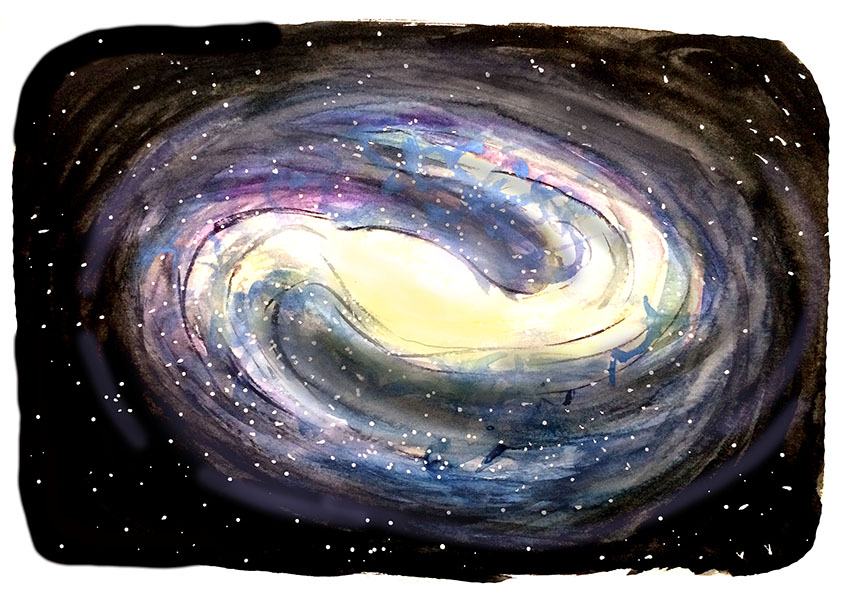A new approach to studying space may reveal more about the history of the universe.
Astronomers from UT and the Space Telescope Science Institute recently developed a new method for looking at distant galaxy clusters. This method will allow astronomers to study galaxies up to ten times fainter than those visible using current techniques.
The new technique, a mathematical model which can filter out closer galaxies to get a better look at those further away, has already been used to examine several galaxy clusters that are part of the Hubble Frontier Fields program, a project to analyze Hubble telescope data. The team published their findings in the Astrophysical Journal on Jan. 23.
The technique will help scientists understand the epoch of reionization, a time period approximately one billion years after the Big Bang. Steven Finkelstein, assistant professor of astronomy and co-author of the study, said that during the epoch, gas spanning the universe was blasted by radiation, possibly from early-forming stars and galaxies.
“There is gas between galaxies, so space seems empty but there is hydrogen and some helium gas,” Finkelstein said. “If we look at it today, we see (the gas is) ionized, which means all the protons have lost their electrons. That tells us that there’s lots of high energy radiation in the universe keeping all this gas ionized.”
Finkelstein said that researchers tried to estimate the total amount of high energy radiation by adding together the amounts of light from observable galaxies. However, he said the amount wasn’t enough to reionize the entire universe.
This finding suggests there are far away galaxies that researchers can’t detect, Rachael Livermore, postdoctoral astronomy researcher and first author of the study, said.
“In order for the whole universe to be reionized, you needed this trend of galaxies becoming more common as they grow fainter to continue about 100 times below the limit of the Hubble telescope,” Livermore said. “We were trying to see if we can we see these extremely faint galaxies, and it turns out we can.”
Researchers currently use a process called gravitational lensing, in which the gravity given off by large galaxy clusters acts as a magnifying glass for fainter galaxies, making the farther galaxies appear bigger.
But even after taking into account those galaxies made visible by gravitational lensing, the amount of light detected was not enough, Livermore said. Light from cluster galaxies in the foreground still made it difficult to view faint ones in the background.
Livermore designed a new modeling technique that allows astronomers to subtract out brighter galaxies and bring fainter ones, which are likely the main source of the energy responsible for reionization, into sight. With it, galaxies that are up to ten times fainter are detectable.
The new method has already been used on two out of six galaxy clusters from the Hubble Frontier Fields Project. Livermore said they also plan on using the larger James Webb satellite telescope, which will launch in October of 2018, to study galaxies that are even farther away and dimmer.
“Even though it’s a bigger telescope and can go fainter, the faintest galaxies we are seeing with lensing are fainter than anything you could see on Webb without lensing, so we’re already surpassing it,” Finkelstein said. “The obvious thing to do is take Webb and (use the new method) to see even fainter galaxies.”















